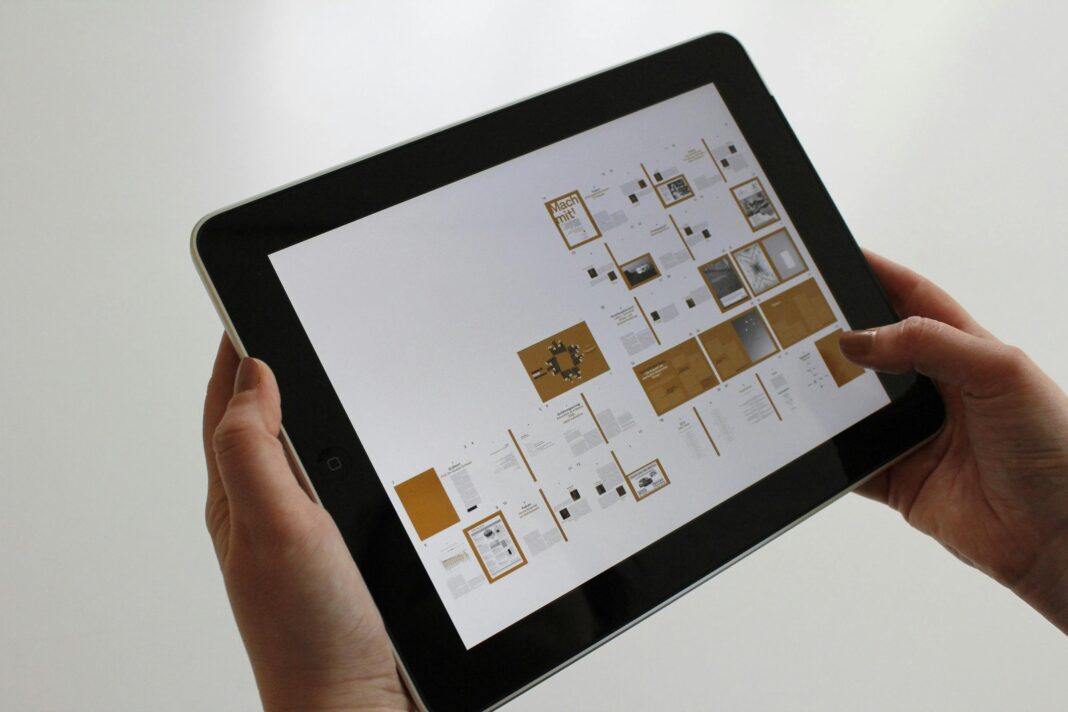Responsive Web Design
Responsive web design has become the standard approach for building modern websites that work seamlessly across all devices. In an era where mobile internet usage has surpassed desktop browsing, creating websites that automatically adapt to different screen sizes is no longer optional – it’s a necessity.

The concept of responsive design was first introduced by Ethan Marcotte in 2010 and has since revolutionized how we approach web development. At its core, responsive design is about creating flexible layouts that respond to the user’s behavior and environment based on screen size, platform, and orientation.
This comprehensive guide will walk you through every aspect of implementing responsive design properly, from fundamental principles to advanced techniques. We’ll cover not just the “how” but also the “why” behind each best practice, ensuring you develop a deep understanding that goes beyond surface-level implementation.
Why Responsive Design is Critical for Modern Websites
The Mobile Usage Revolution
Mobile devices now account for over 58% of all website traffic globally. This shift in user behavior means websites that don’t adapt to smaller screens risk alienating more than half their potential audience. Users expect instant access to information regardless of the device they’re using, and Google’s mobile-first indexing means responsive sites rank better in search results.
Business Impact of Responsive Design
Companies that implement responsive design properly see measurable benefits:
- Increased conversion rates (up to 30% improvement)
- Lower bounce rates (often 20-30% reduction)
- Improved SEO performance
- Higher user engagement metrics
- Reduced maintenance costs (vs. maintaining separate mobile sites)
Technical Advantages
From a development perspective, responsive design offers:
- Single codebase for all devices
- Future-proofing against new device sizes
- Easier maintenance and updates
- Better performance when implemented correctly
Core Principles of Responsive Web Design
1. Fluid Grid Systems
The foundation of responsive design lies in fluid grid layouts that use relative units instead of fixed pixels.
Key concepts:
- Percentage-based widths instead of fixed pixels
- Relative units (em, rem, vh, vw) for flexible sizing
- CSS Grid and Flexbox for modern layout control
- Calculated margins and padding that scale appropriately
Implementation example:
css
Copy
Download
.container {
display: grid;
grid-template-columns: repeat(auto-fit, minmax(300px, 1fr));
gap: 1.5rem;
}
2. Flexible Images and Media
Media elements must scale intelligently to prevent layout breaks.
Best practices:
- Always use
max-width: 100%for images - Implement responsive images with srcset and sizes attributes
- Use modern image formats (WebP, AVIF) for better compression
- Consider art direction for critical images
- Lazy load non-critical images
Advanced technique:
html
Copy
Download
Run
<picture> <source media="(min-width: 1200px)" srcset="large.jpg"> <source media="(min-width: 768px)" srcset="medium.jpg"> <img src="small.jpg" alt="Responsive image"> </picture>
3. Media Query Implementation
Media queries allow CSS to apply different styles based on device characteristics.
Strategic approach:
- Base breakpoints on content, not devices
- Use mobile-first methodology (min-width queries)
- Test thoroughly at all breakpoints
- Consider reduced motion preferences
- Account for different interaction modes (touch vs mouse)
Effective media query structure:
css
Copy
Download
/* Base styles (mobile-first) */
.component {
padding: 1rem;
}
/* Tablet styles */
@media (min-width: 768px) {
.component {
padding: 1.5rem;
}
}
/* Desktop styles */
@media (min-width: 1024px) {
.component {
padding: 2rem;
}
}
Advanced Responsive Design Techniques
1. Responsive Typography Systems
Text must remain readable across all devices while maintaining hierarchy.
Comprehensive typography approach:
- Fluid typography using clamp()
- Line length optimization (45-75 characters)
- Vertical rhythm maintenance
- Accessibility-focused contrast ratios
- Viewport-relative sizing for headings
Example implementation:
css
Copy
Download
:root {
--min-font-size: 16px;
--max-font-size: 20px;
}
body {
font-size: clamp(
var(--min-font-size),
1.5vw + 1rem,
var(--max-font-size)
);
line-height: 1.6;
}
2. Adaptive Navigation Patterns
Navigation must transform effectively between device sizes.
Patterns to consider:
- Hamburger menus for mobile
- Priority+ patterns for important items
- Tabbed navigation for intermediate sizes
- Mega menus for desktop when appropriate
- Accessible off-canvas implementations
Accessible hamburger menu example:
html
Copy
Download
Run
<nav aria-label="Main">
<button aria-expanded="false" aria-controls="menu">☰</button>
<ul id="menu" hidden>
<li><a href="/">Home</a></li>
<!-- More items -->
</ul>
</nav>
3. Performance Optimization Strategies
Responsive doesn’t mean slow – performance is crucial.
Comprehensive performance tactics:
- Critical CSS inlining
- Intelligent resource loading
- Conditional JavaScript loading
- Responsive image service implementation
- CDN utilization for global performance
Performance-focused responsive image loading:
javascript
Copy
Download
const imageObserver = new IntersectionObserver((entries) => {
entries.forEach(entry => {
if (entry.isIntersecting) {
const img = entry.target;
img.src = img.dataset.src;
imageObserver.unobserve(img);
}
});
});
document.querySelectorAll('img[data-src]').forEach(img => {
imageObserver.observe(img);
});
Testing and Debugging Responsive Designs
1. Cross-Browser Testing Methodology
Ensure consistent experience across all browsers.
Testing protocol:
- Chrome, Firefox, Safari, Edge baseline
- Mobile browser variations
- Legacy browser considerations
- Progressive enhancement strategy
- Feature detection with Modernizr
2. Device Testing Strategies
Go beyond emulators for real-world testing.
Comprehensive testing approach:
- Physical device testing lab
- Cloud-based device testing services
- Network throttling tests
- Real user monitoring implementation
- Accessibility auditing
3. Common Responsive Bugs and Fixes
Solutions to frequent responsive issues.
Bug database:
| Issue | Cause | Solution |
|---|---|---|
| Horizontal scrolling | Fixed width elements | Use max-width: 100% |
| Touch target too small | Absolute sizing | Minimum 48px touch targets |
| Mobile menu not working | JavaScript errors | Progressive enhancement |
| Layout shifts | Unstyled content | Proper CSS loading order |
| Slow rendering | Unoptimized assets | Proper compression |
Future-Proofing Your Responsive Design
1. Emerging Technologies
Stay ahead of the responsive design curve.
Cutting-edge considerations:
- Container queries implementation
- CSS subgrid adoption
- Variable fonts utilization
- Dark mode adaptation
- Foldable device considerations
2. Maintenance Strategies
Keep your responsive design working long-term.
Sustainable practices:
- Design token implementation
- Component-based architecture
- Automated visual regression testing
- Documentation standards
- Style guide maintenance
FAQs About Responsive Web Design
1. How many breakpoints should I use?
There’s no fixed number – typically 3-5 major breakpoints based on content needs, with minor adjustments as needed. Always let your content determine breakpoints rather than specific devices.
2. Is responsive design enough, or do I need a mobile app?
For most content-based websites, responsive design is sufficient. Apps are only necessary for complex functionality that requires device integration or offline access.
3. How do I handle complex data tables responsively?
Several approaches:
- Horizontal scrolling containers
- Priority column stacking
- Summary/details pattern
- Chart conversions for visual data
4. What’s the best way to test responsive designs?
Combine:
- Developer tools device emulation
- Real device testing
- Cloud testing services
- User feedback collection
5. How do I convince clients to invest in responsive design?
Present data on:
- Mobile traffic percentages
- Conversion rate improvements
- SEO benefits
- Maintenance cost savings
- Competitor analysis
Conclusion and Next Steps
Implementing responsive web design properly requires understanding both the technical implementation and the underlying principles that make it effective. By following the comprehensive practices outlined in this guide, you’ll create websites that not only adapt to any screen size but provide optimal user experiences across all devices.


